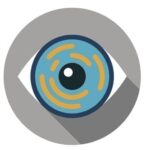CLEAR is showcasing its biometric technology to the public with a series of pop-up installations during the holiday season. One installation will run until December 31 at a Showfields interactive shopping mall in New York, while the other two will take place at Rimowa luggage stores in New York and San Francisco. Those Rimowa pop-ups will close on December 23.

The goal, according to CLEAR, is to raise awareness of the company’s biometric technologies, and to show people the utility that it has in everyday situations. The company is best known for its CLEAR Plus travel screening solution, which uses iris biometrics to allow paying travelers to move through airport security checkpoints more quickly.
However, CLEAR noted that its identity technology can be used for similar ends in other settings. For example, CLEAR Stadium Access can speed up entry procedures at concerts and sporting events, while its mobile identity app can be used as proof of age for those purchasing alcohol and other age-restricted goods. The app could also be used to share COVID-19 health credentials, and to enable contactless transactions in a retail environment.
The actual installations will feature CLEAR’s biometric scanners, and will be bigger than the public installations that CLEAR has conducted in the past. The company will be offering CLEAR gift cards to those who participate, and is hoping that the pop-ups will make people more comfortable with biometric technologies.
“People are still kind of scared of biometrics, and they’re not sure how people are going to use that data,” said R/GA Global Executive Creative Director Gabriel Cheung. “If they are showing up in places where people understand how it’s going to be used, even in a pop-up, it is actually quite a nice way to start to kind of onboard.”
More people are enrolling in the CLEAR Plus program despite the decreased travel volume during the pandemic. The cumulative number of enrollments was up 58 percent in the third quarter of the year, and now sits at 8.1 million people. The comparable figures were 5.1 million and 4.2 million in 2020 and 2019, respectively.
Source: The Wall Street Journal
–
December 17, 2021 – by Eric Weiss






Follow Us